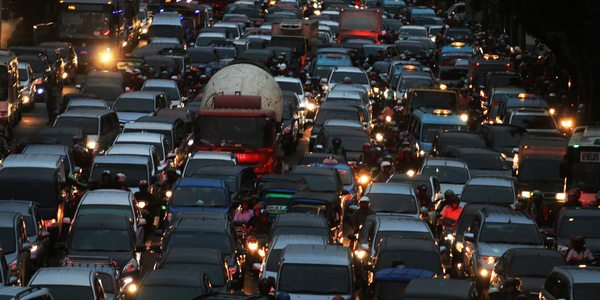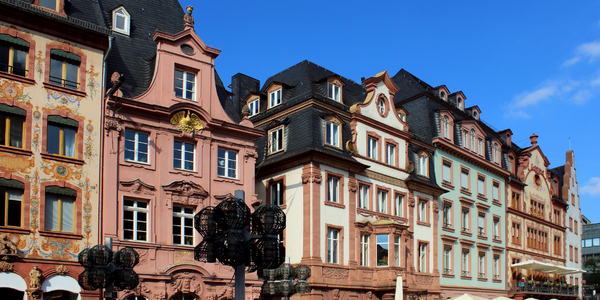жҷәж…§еҹҺеёӮиҝҗиҗҘ

жҰӮиҝ°
жҷәж…§еҹҺеёӮиҝҗиҗҘеҢ…жӢ¬е®һзҺ°жҷәж…§еҹҺеёӮжҰӮеҝөжүҖйңҖзҡ„дёҖзі»еҲ—и§ЈеҶіж–№жЎҲпјҢйҖҡиҝҮе°ҶдҝЎжҒҜе’ҢйҖҡдҝЎжҠҖжңҜдёҺдј ж„ҹеҷЁе’ҢиҝһжҺҘи®ҫеӨҮзӣёз»“еҗҲпјҢд»ҘдјҳеҢ–еҹҺеёӮиҝҗиҗҘе’ҢжңҚеҠЎзҡ„ж•ҲзҺҮгҖӮжҷәж…§еҹҺеёӮжҠҖжңҜдҪҝеҹҺеёӮе®ҳе‘ҳиғҪеӨҹдёҺзӨҫеҢәжҲҗе‘ҳе’ҢеҹҺеёӮеҹәзЎҖи®ҫж–ҪиҝӣиЎҢдә’еҠЁпјҢ并е®һж—¶зӣ‘жҺ§еҹҺеёӮжғ…еҶөгҖӮеҜ№еҹҺеёӮз®ЎзҗҶиҖ…зҡ„еҘҪеӨ„еҢ…жӢ¬е®һж—¶и·ҹиёӘеҹҺеёӮдёӯзҡ„дәӢ件гҖҒз®ЎзҗҶжӢҘе өгҖҒжҸҗй«ҳиҝҗиҗҘж•ҲзҺҮгҖҒеҮҸе°‘зҙ§жҖҘе“Қеә”ж—¶й—ҙд»ҘеҸҠе®һзҺ°иҝңзЁӢз®ЎзҗҶгҖӮзҺ°д»Ји§ЈеҶіж–№жЎҲж—ЁеңЁе°ҶжүҖжңүеҹҺеёӮж•°жҚ®йӣҶжҲҗеҲ°дёҖдёӘд»ӘиЎЁжқҝдёӯгҖӮиЎЎйҮҸеҺҶеҸІе’ҢеҪ“еүҚ KPI д»ҘиҝӣиЎҢз»©ж•ҲиҜ„дј°е’Ңе·®и·қеҲҶжһҗпјҢ并规еҲ’жңӘжқҘзҡ„еҹәзЎҖи®ҫж–Ҫе’ҢжңҚеҠЎжҠ•иө„гҖӮ
йҖӮз”ЁиЎҢдёҡ
- иҝҗиҫ“
- иғҪжәҗ
- е»әзӯ‘дёҺжҘје®Ү
йҖӮз”ЁеҠҹиғҪ
- е…¶д»–
жЎҲдҫӢз ”з©¶.

Case Study
Highway Signs IoT Solution
We all are familiar with electronic road signs both those fixed to overpasses and those portable devices on the highway or even secondary back roads. For far too long it was costly and difficult to update the messages on these signs as it required an approved individual (Police, Department of Transportation, etc.) to update these signs. This is especially critical during safety events such as an Amber Alert - a better solution was needed.

Case Study
IIC Connected Vehicle Urban Traffic Management Testbed
Road congestion and strained transportation networks are persistent concerns associated with the rapid urbanization of developing and developed economies. A 2015 study1 reported that travel delays due to traffic congestion led to the waste of 3.1 billion gallons of fuel and a loss of nearly 7 billion extra hours to travelers during rush hour traffic, with a nationwide cost of around $160 billion, or $960 per commuter. Alleviating traffic congestion, in addition to improving safety, is leading public and private organizations to explore new mobility paradigms such as ride-share autonomous vehicles. GOAL The goal of the Connected Vehicle Urban Traffic Management (CVUTM) testbed is to create a smart road traffic ecosystem featuring connected vehicles using vehicle-to-vehicle (V2V) and vehicle-to-infrastructure (V2I) technologies, sensor fusion, industrial IoT platforms, cloud infrastructure, and edge analytics. This testbed will serve to preempt road congestion, automatically detect unusual eventson the road, and enable cooperative movement of traffic. In due course, both autonomous and non-autonomous vehicles will participate in this ecosystem with a goal of minimizing road congestion and improve overall improving motorist and pedestrian safety.

Case Study
Microsoft makes urban data usable via cloud technology
As one of the biggest megatrends of the 21st century, urbanization affects both recent and established industrial countries. In the European Union, already more than 70 percent of the population live in an urban area. In Germany, the uninterrupted urban growth is likely to pose huge challenges for many municipalities in the future, in areas like traffic, energy, environment and health. For this reason, innovative solutions in terms of city planning and city development are required. Additionally, increasingly demanding citizens expect a high quality of life and improved citizen services. To address those challenges, traditional routes must be tested, old infrastructures modernized and administrative processes organized more efficiently.

